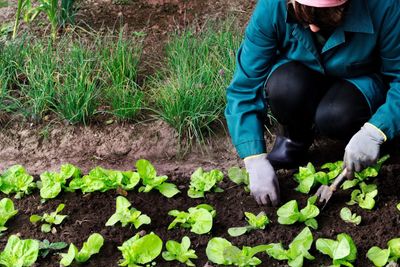When to Plant Fall Vegetables in Zone 6
You probably won’t find many starter vegetables in your local garden center in autumn, when most gardeners have put their gardens to bed for the winter. However, many cool-season vegetable seeds can be planted directly in the garden. The goal is to get the seedlings planted outdoors in time to take advantage of the last days of summer warmth. The exception is veggies in the cabbage family, which should be started by seed indoors. Keep in mind that cabbage and its cousins, Brussels sprouts, cauliflower, kohlrabi, and kale, tend to grow very slowly when temperatures turn cold. For direct-planting seeds, when to plant fall vegetables in zone 6? As a general rule of thumb, determine the date of the first expected frost in your area. Although the date can vary, the first frost in zone 6 is generally around November 1. If you aren’t sure, ask at your local garden center or call the Cooperative Extension office in your region. Once you have determined the likely frost date, look at the seed packet, which will tell you the number of days to maturity for that vegetable. Count back from the first expected frost date to determine the best time to plant that particular vegetable. Hint: Look for fast-maturing vegetables.
Fall Planting Guide for Zone 6
Cool weather brings out the best flavor in many vegetables. Here are a few hardy vegetables that can tolerate frosty temperatures as low as 25 to 28 F. (-2 to -4 C.). Although these vegetables can be planted directly in the garden, many gardeners prefer to start them indoors:
Spinach Leeks Radishes Mustard greens Turnips Collard greens
Some vegetables, considered semi-hardy, can tolerate temperatures of 29 to 32 F. (-2 to 0 C.). These should be planted a bit earlier than the hardy vegetables listed above. Also, be prepared to offer some protection during cold weather:
Beets Lettuce Carrots (can be left in the garden all winter in most climates) Swiss chard Chinese cabbage Endive Rutabaga Irish potatoes Celery
